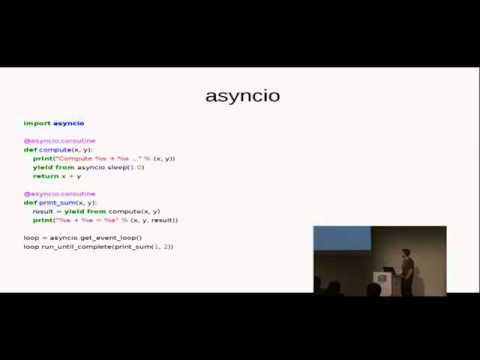Description:
Explore the new asyncio library in Python 3.4 (also known as Tulip) through a practical case study on home automation in this EuroPython 2014 conference talk. Dive into event-driven applications for managing and monitoring various devices, from electricity usage trackers to temperature sensors and remote-controlled appliances. Learn how asyncio, proposed by Guido van Rossum in PEP 3156, brings a clean and modern approach to the Python ecosystem. Discover the implementation of asyncio with devices like Raspberry Pi, RFXCom's RFXtrx, Owl CM160 electricity tracker, Oregon scientific thermometers, and Foscam IP cameras. Compare the asyncio-based solution with a previous Twisted implementation, and gain insights into handling multiple event-driven devices efficiently. Cover topics such as radio communication, event streams, asyncio documentation, Python RFHCOM, avoiding callback traps, and using yield from statements.

Using Asyncio - aka Tulip - for Home Automation
Add to list
#Conference Talks
#EuroPython
#Programming
#Programming Languages
#Python
#Software Development
#Event-Driven Programming
#Computer Science
#Internet of Things
#Smart Homes
#Home Automation
#Asyncio